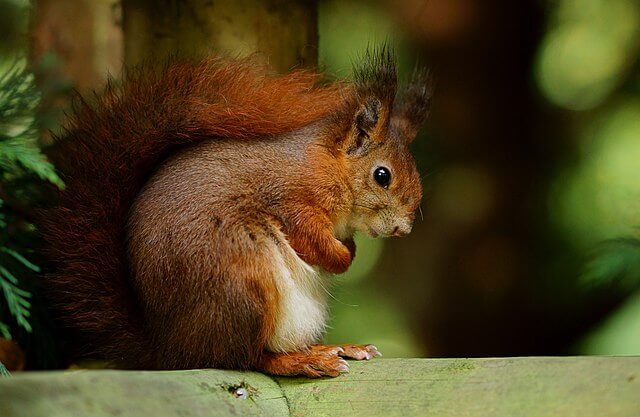
Red squirrels are thriving on the Isle of Wight, where plentiful food and suitable habitats could support a population almost twice its current size, new research has found.
Scientists used climate models to predict how the animals might cope under different climate change scenarios, including rising temperatures and reduced rainfall. They found no direct threat to the squirrels’ survival, noting instead “a natural ability to adapt to a range of climatic conditions.”
Analysis of fur samples also revealed that the island hosts two genetically distinct groups of red squirrels. One sub-population is largely concentrated in the east, the other in the west, but evidence suggests the groups are beginning to mix—helping to boost genetic diversity and strengthen future generations.
The Isle of Wight is home to an estimated 3,500 red squirrels, the largest surviving population in southern England. Their success is partly due to the island’s separation from the mainland by the Solent, which has kept invasive grey squirrels at bay. Across much of England, red squirrel numbers have collapsed since grey squirrels were introduced in the late 19th century; the greys outcompete them for food and carry squirrel pox, a virus fatal to reds.
Dr Emilie Hardouin, a conservation geneticist at Bournemouth University, said the Isle of Wight population “might be the last remaining populations that used to be native to southern England.”
Researchers stressed, however, that continued monitoring is essential, as island populations remain vulnerable to threats such as restricted genetic diversity.
Helen Butler, the founder of the Wight Squirrel Project, a conservation group, said: “It’s hard to overstate their importance to the Isle of Wight.” For Helen, who began working on the protection of the red squirrel “almost by accident” after one inspiring volunteering experience more than 30 years ago, every day can look different.
“People can call in and report things to me … because I can’t be everywhere at once. Sometimes I’m attending to ones that are sick and injured, or investigating if someone thinks they’ve seen a grey one.
“They’re also important to local businesses – they bring visitors in who want to tick seeing a red squirrel off their bucket list.”
Debbie Hart, another volunteer, said: “Everybody loves them … if people see them in the road they get out of their cars to take pictures. I have about eight in my garden – you get to know them, what they like or don’t, for example they’ll eat red grapes, but they won’t eat green ones.”
Hardouin added: “Now that we have the genetic data and we have the forestry data it’s easier to go back and look to see if we are missing any corridors to help the two groups of red squirrels integrate to help them thrive.”
——————————————————————————
At Natural World Fund, we are passionate about restoring habitats in the UK to halt the decline in our wildlife.

